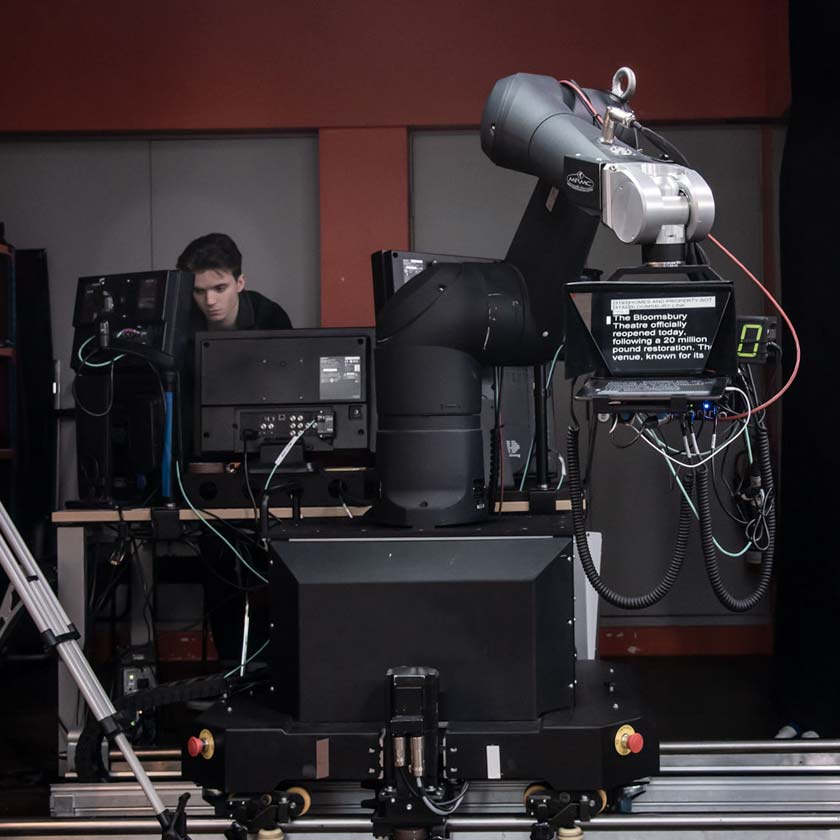The Rise Of The Robotic Camera
Article: The Rise Of The Robotic Camera | from The Broadcast Bridge | By Adrian Pennington
The rise of the PTZ camera, discussed in a previous post, fits into the wider trends for remote operation, robotic cameras, and automated content production. We spoke with Mark Roberts Motion Control (Nikon-owned since 2016), one of the pioneers in robotic cameras to gain insight into the drivers for this, new applications and future developments.
The film and TV industry continues to benefit from automation efficiencies with motion control robotics compatible with third party products throughout entirely automated workflows. Machine vision and real-time image analysis are helping to augment the control of moving cameras, while robust IP architecture permits extreme remote operation. Systems are getting smaller, saving camera footprints and opening up a wider range of potential positions while the layers of system redundancy and control options reduce risk in live operations
Assaff Rawner, CEO of MRMC suggests another reason for take-off:
“Taking viewers closer to the action and providing more unique perspectives and engagement is one. Another is consistency of output made possible through repeatable programmed moves. Also, the demand on space, whether seats in stadiums or modular studios, is increasing pressure to reduce the operational footprint of cameras whilst accommodating for the demand of increasing camera angles.”
Simplicity of integration in existing production workflows is one of the key advances of robotic cameras. MRMC has focused on a simple plug and play approach to broadcast robotics releasing a range of Polycam and MHC products products tailored to remove the complex user operation usually associated with multi-head robotic camera systems.
Its acquisition of Camerobot last year, has also brought together best of breed hardware and software to create a new level of broadcast studio multi-axis robotic studio solutions including VR and AR integration with all the major vendors.

With the rise in quality of small format cameras, advancing motor technology and motion control software, together with new levels of product design aesthetics, robotic camera positions are bringing a level of motion usually associated with manually controlled fluid heads and in positions that add further value to productions. Such advances are allowing robotic cameras moves to be cut live to air (rather than just replays) and, through a wider range of payload and mounting options, opens the possibility of more camera positions without compromise to venue audience space.
“Another area of growth for robotic cameras has been in the rise of remote productions (or REMIs),” says Rawner. “With the increasing availability of stable high-bandwidth networks, the control of camera robotics over IP is an attractive proposition to lower production costs and minimise travel. MRMC has standardized on IP control for all of its robotic range with built-in features such as network diagnostics, IP video encoding at the camera head and localised user client applications for full feature remote control.”
To read the full article visit The Broadcast Bridge Here
